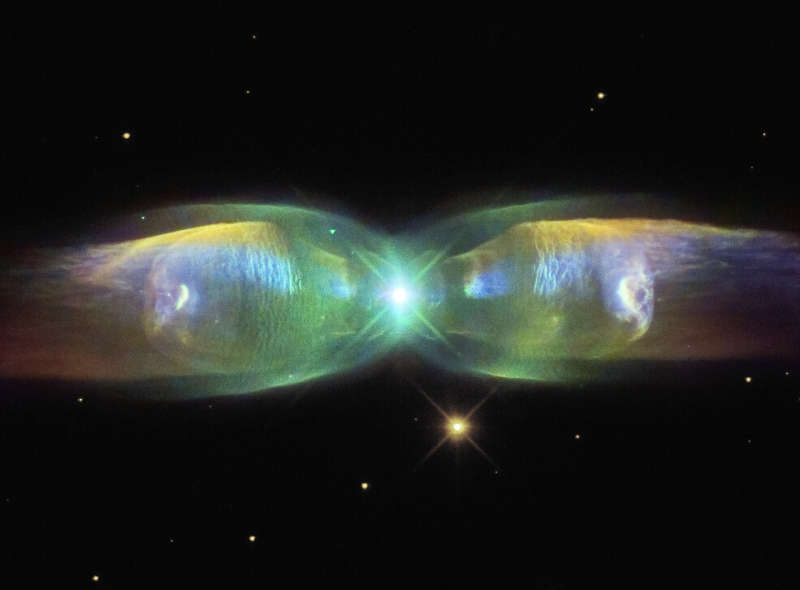
|
Explanation: Are stars better appreciated for their art after they die? Actually, stars usually create their most artistic displays as they die. In the case of low-mass stars like our Sun and M2-9 pictured here, the stars transform themselves from normal stars to white dwarfs by casting off their outer gaseous envelopes. The expended gas frequently forms an impressive display called a planetary nebula that fades gradually over thousands of years. M2-9, a butterfly planetary nebula 2100 light-years away shown in representative colors, has wings that tell a strange but incomplete tale. In the center, two stars orbit inside a gaseous disk 10 times the orbit of Pluto. The expelled envelope of the dying star breaks out from the disk creating the bipolar appearance. Much remains unknown about the physical processes that cause and shape planetary nebulae.
Almost Hyperspace:
Random APOD Generator
|
January February March April May June July August September October November December |
| ||||||||||||||||||||||||||||||||||||||||||||||||
NASA Web Site Statements, Warnings, and Disclaimers
NASA Official: Jay Norris. Specific rights apply.
A service of: LHEA at NASA / GSFC
& Michigan Tech. U.
Based on Astronomy Picture
Of the Day
Publications with keywords: planetary nebula - butterfly nebula
Publications with words: planetary nebula - butterfly nebula
See also:
- APOD: 2024 February 12 Á HFG1 & Abell 6: Planetary Nebulae
- APOD: 2023 December 24 Á NGC 2440: Cocoon of a New White Dwarf
- APOD: 2023 October 3 Á MyCn 18: The Engraved Hourglass Planetary Nebula
- NGC 1360: The Robin's Egg Nebula
- APOD: 2023 April 16 Á M2 9: Wings of a Butterfly Nebula
- The Medusa Nebula
- Jones Emberson 1
